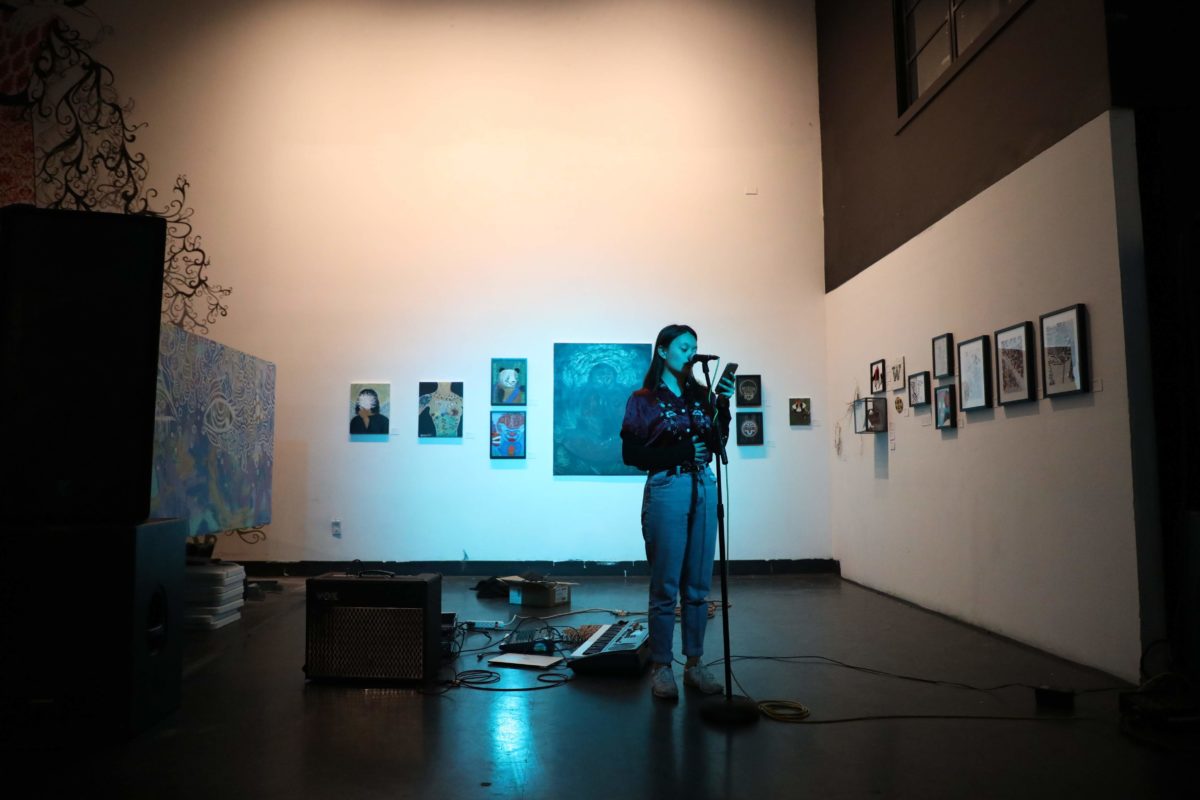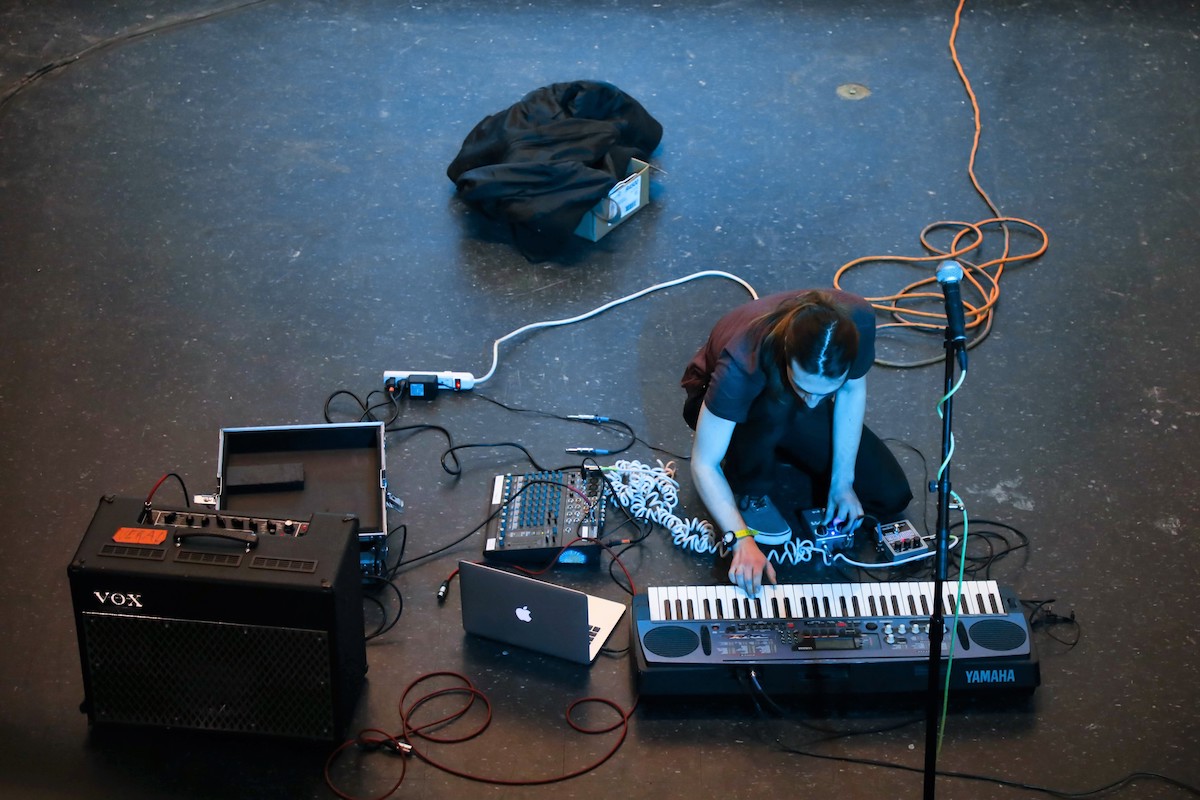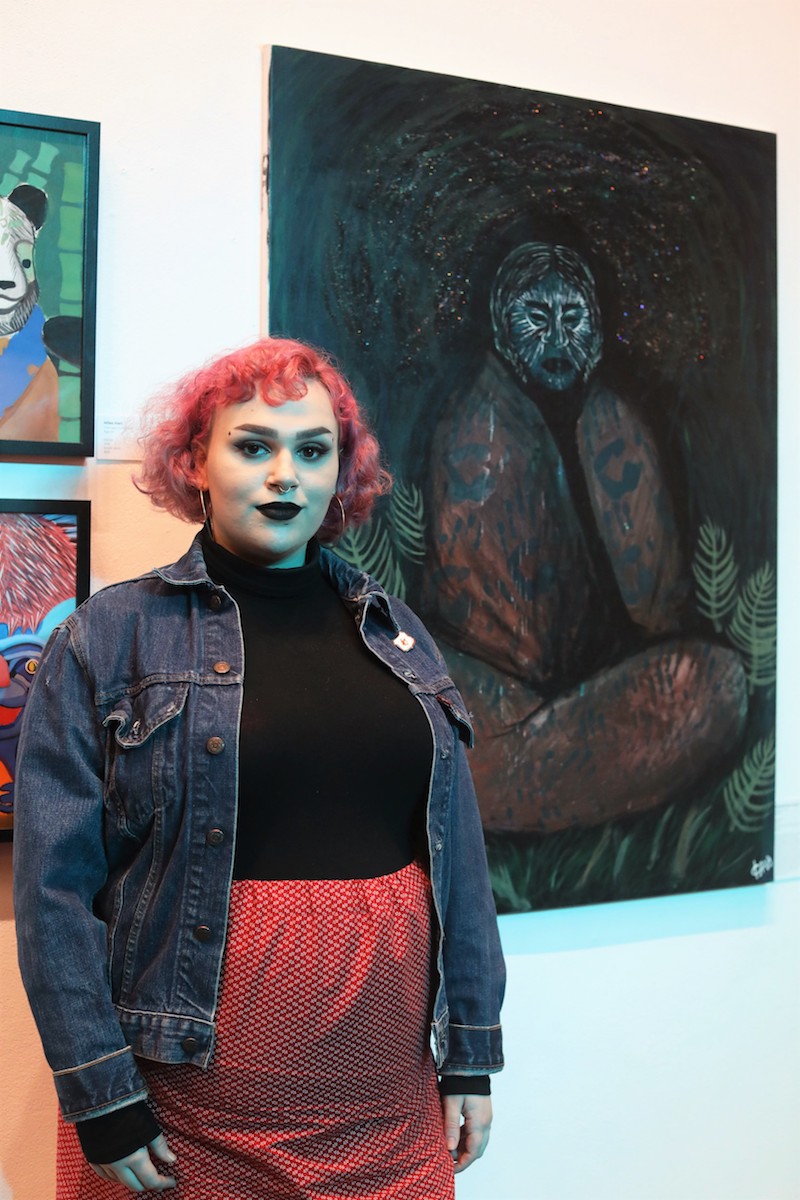
A tranquil, blue light shone upon the stage at The Vera Project. The room was packed, but a hush fell over the crowd as a young woman stepped up to the microphone. Dressed in an crimson velvet blouse, Namaka Auwae-Dekker, a mixed Native Hawaiian/Filipino and Caucasian poet, surveyed the audience. Then, she began to speak.
Auwae-Dekker’s poem, “Dichotomy” expressed her internal struggle between her white and indigenous identities. Her voice echoed through the room not only with her own struggles, but the painful history of her indigenous people.
“It’s extremely difficult to be indigenous just in general,” Auwae-Dekker said. “Having to constantly justify your people and proving that you are still here… indigenous people are often talked about in past tense, or we’re not acknowledged, so it’s very challenging.
Auwae-Dekker is one of several artists featured in the yəhaw̓ Indigenous Teen Art Show. Running at The Vera Project at the Seattle Center from Feb. 3 to 28, the show is a collaborative celebration of young, Native artists in the Seattle-Tacoma area. The art spans all mediums, from intricate beadwork to colorful acrylic paintings, from photography prints to live performances by indigenous musicians and poets like Auwae-Dekker.
The Indigenous Teen Art Show is a project of yəhaw̓, a regional, year-long project showcasing Native artists in a variety of venues throughout thePacific Northwest. Along with the teen art show, yəhaw̓ has organized a number of events, including the upcoming inaugural show at ARTS at King Street Station, which will feature more than 200 Native creators.
yəhaw̓ partnered with Teens in Tacoma, a student-led organization dedicated to empowering teen artists, to organize the Indigenous Teen Art Show.
Teens from all over Washington who identified as indigenous were encouraged to submit their artwork, which were accepted without restrictions.
“We wanted it so that anyone who applied would automatically be accepted,” said Asia Tail, an indigenous artist and yəhaw̓ curator. “We have such a rich diverse indigenous community, and we want it to have a chance to represent itself.”
The voices highlighted in the yəhaw̓ Indigenous Teen Art Show are part of a growing movement that encourages indigenous young adults to form a community that expresses their identity through art. These teens are not only participating in an opportunity to discover and develop their potential within the art community, they are the forefront of a narrative on the intersection between American and indigenous culture.
“Artists are often the visionaries of social movements,” Tail said. “They are at the forefront of change.”
“This is a good opportunity for people, specifically the indigenous teens, to just be able to get their art out there,” said Michael Anderson, assistant executive director of Teens of Tacoma and a student at Bellarmine Preparatory School. “Even just making the art, I’ve found that it’s a really good way to explore yourself and figure out how do you convey yourself through your art.”

The Puget Sound area was originally inhabited by members of the Coast Salish and Duwamish tribes, among many others. While there are 29 federally recognized Native American tribes spread throughout Washington state today, indigenous people make up roughly 3 percent of the total population, including those who identify as mixed race, according to a 2017 estimate by the American Community Survey.
Aiyanna Stitt, a Choctaw artist and high school student who worked with yəhaw̓ and Teens of Tacoma to organize the show, spoke about the importance of acceptance as an indigenous teen.
“It’s hard to find community,” she said. “I’m in a Native club at my high school and the max number of people is probably five that come, but it’s usually [only] two or three.”
As members of a small and dispersed ethnic group, finding representation is difficult. Displaying art is a way to share dialogue about the struggles that indigenous people face. The yəhaw̓ Indigenous Teen Art Show also is an opportunity to meet and connect with other artists who may share similar struggles.
“I think learning that there was a show only for indigenous people made me feel a lot more comfortable sending my poetry in,” Auwae-Dekker said. “I think it inspired me more to write specifically about my culture.”

(Photo by Nicole Pasia.)
The show was largely organized by teenagers themselves. The need for a greater appreciation for teen artists in the Seattle-Tacoma area was a driving force in the show’s fruition.
“I feel like as a teenager it’s really hard to be a respectable artist if you’re not above the age of 25 or if you haven’t gone to an art school yet,” said Teens in Tacoma executive director Moe’Neyah Holland, who is a student at Curtis High School. “The main goal is to attempt to really shed light on these artists that have really such hidden potential.”
The new generation of indigenous creatives are ready to write the next chapter of their cultural narrative. Nataanii Cottier (Oglala Lakota), a featured artist, both honors her indigenous culture and breaks barriers in the art community through her work.
Cottier has a processing disorder called synesthesia, in which visual effects are associated with certain sounds. Conversations with certain people associate with specific auras, which has influenced Cottier’s painting style, which mainly consists of portraits.
Cottier’s striking, four foot tall acrylic painting, “Ancestor,” is anchored at the center wall of the exhibit, watching over the milling crowd in silent dignity.
“I think it’s very valuable especially because I feel like indigenous people aren’t really put forward especially in art spaces,” Cottier said. “If they are, it’s only for making things that are considered ‘traditional.’ While those are valid and important forms of art, it’s not something I want to be limited to.”
Some of the teen artists say after their experience with the yəhaw̓ Indigenous Teen Art Show, their sights are now set on larger shows and venues.
“I hope that it makes me more prepared to speak out louder, and to create more poetry and more of an influence in the indigenous community, and create a louder voice outside of it,” Auwae-Dekker said. “I hope this creates more exposure for all of the artists here. I think that’s what I’m most excited for, to hear more of the voices I see here.”


